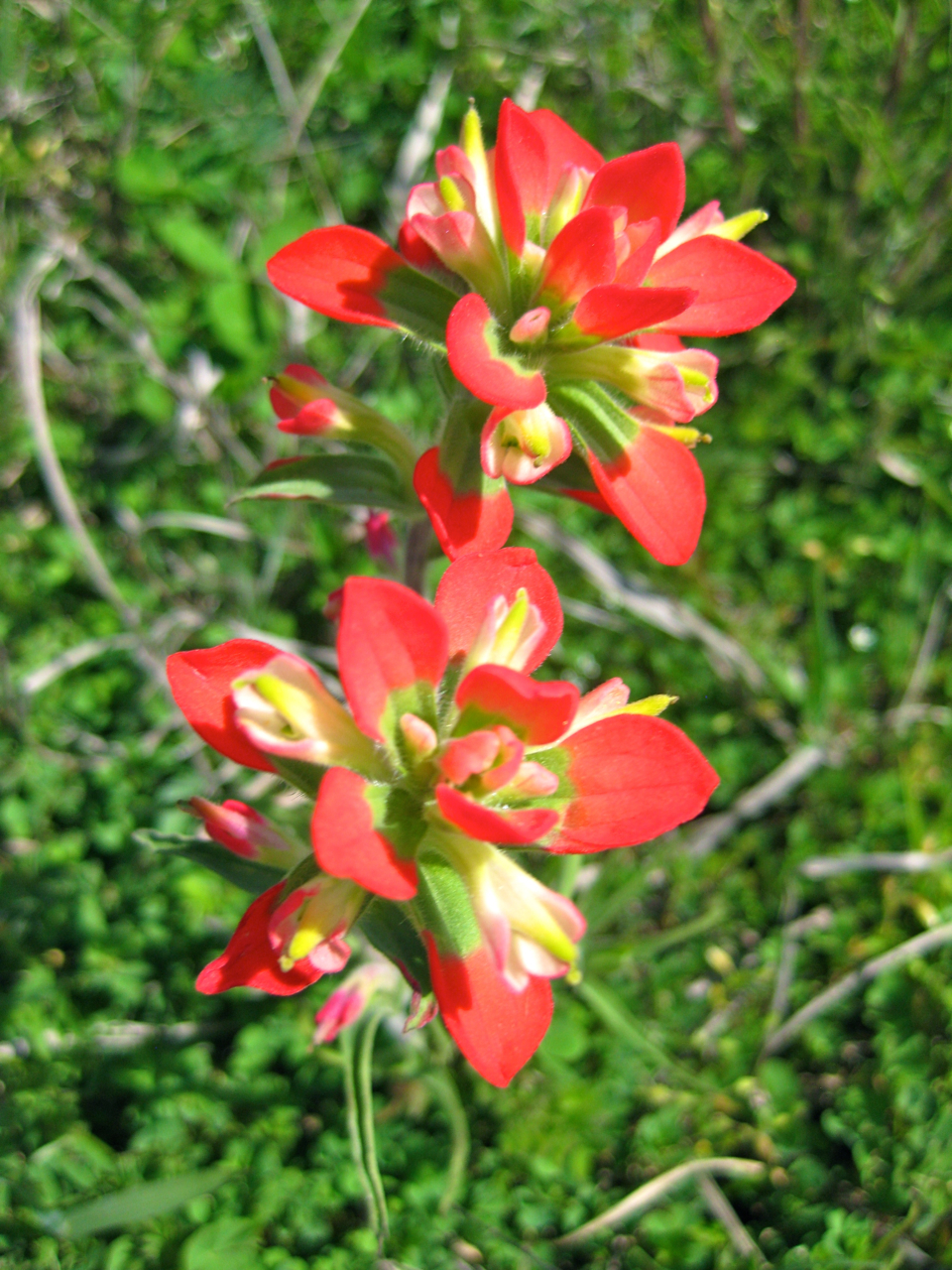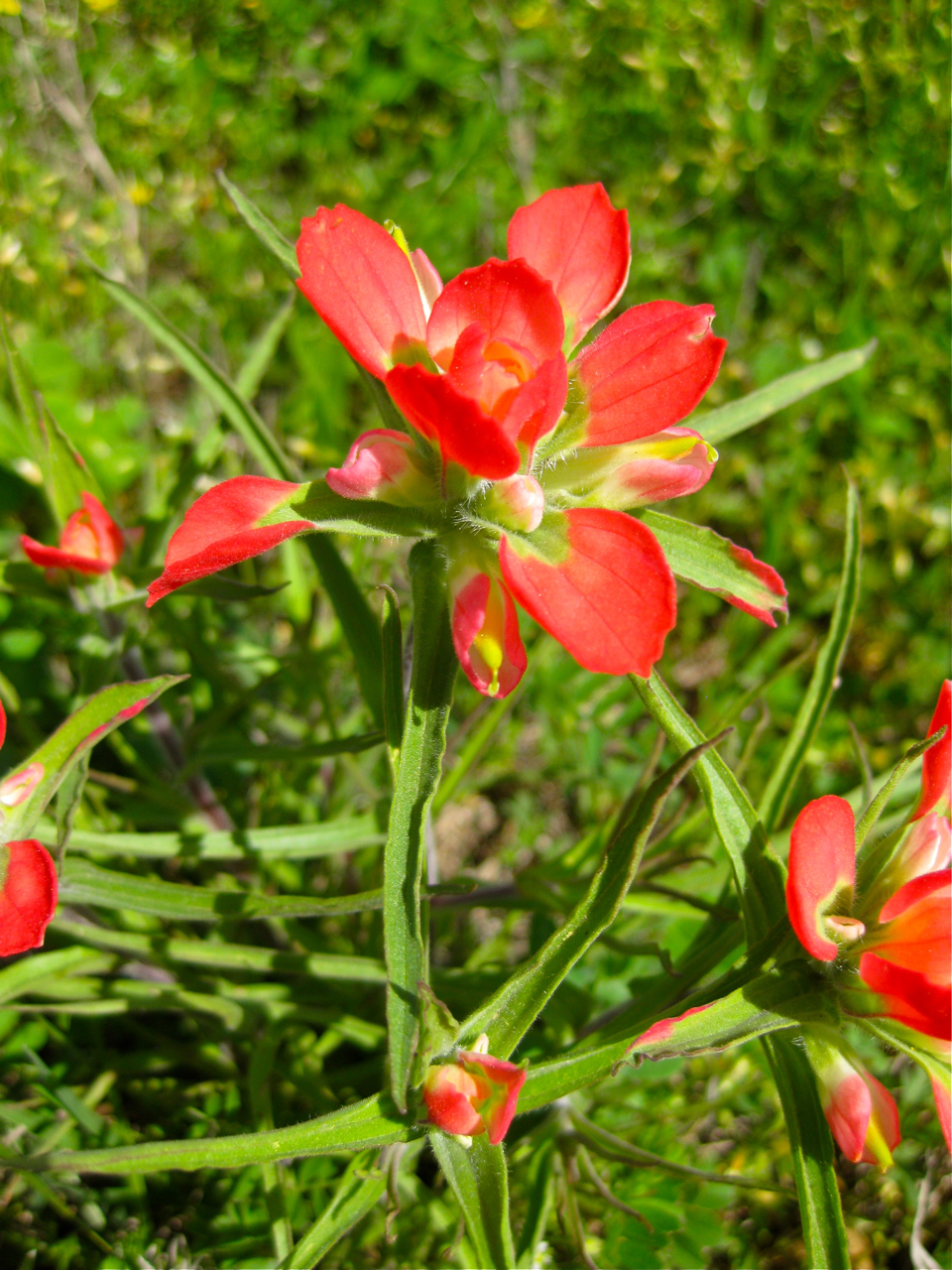Driving over on Norman’s west side today my eye was caught by the distinct color of the season’s first Castilleja indivisa. This patch was behind Sam’s Club of all places. Despite human’s best efforts wildness persists. That gives one hope:) 


Occasionally you get glimpses of what this land may have looked like 150 years ago. I can imagine a whole hillside covered in the pretty purple spring blossoms of Anemone caroliniana. Sadly, today I found only this one lone specimen, perhaps the last of it’s kind in this spot. Remnants of the past but also inspiration for the future. Together we can bring back some of these past beauties.
Height: 5-10+ feet
Spread: 2-3+ feet
Type: Perennial
Origin: Native to much of North America, including many counties in Oklahoma
Exposure: Full sun
Water: Moderate to moist but does fine with some drought
Edible: Produces delicious and useful tubers which are called Jerusalem Artichokes or sunchokes and can be eaten raw or cooked. The taste is similar to potatoes but with a sweet nuttiness and a hint of artichokes. Nutritionally the tubers are high in protein, and rich in iron, potassium and a range of B vitamins. There is even a liquor distilled from the tuber.
Medicinal: Jerusalem artichokes have historically been used as a dietary supplement for people suffering from diabetes to reduce blood sugar levels and minimize the need for insulin.
Companions: Panicum virgatum (switch grass), Baptisia, Lespedeza, Desmanthus illinoensis (illinois bundleflower)
Notes: Helianthus Tuberosus is in the sunflower family and the plants resemble bushy sunflowers. The blooms are a very striking and profuse yellow which is quite a display and good at attracting birds and pollinators. There are a number of different varieties and the species has a lot of genetic diversity. The tubers color can be varying shades of red, white, brown and yellow. It may have a tendency to overrun an area when not kept in check but it can be a great addition to either a perennial edible bed or interspersed in a native garden. Works well with native grasses and legumes. Oikos Tree Crops carries a very nice selection of varieties. Success can also be had from planting grocery store bought tubers. Natural food stores often stock them. Any plant that is both edible and native gets top marks from us!
Back in August I went and looked at Washington Elementary’s Outdoor classroom space to see what might be done to restore it to a functional place for learning. For three years or so the area had been virtually left alone and as a result is was in pretty bad shape. A thick impenetrable mass of Bermuda grass, Black Locust saplings and Torilis arvensis Hedge Parsley had set up camp and virtually no desirable flora remained on the site. The immediate solution was to remove all of this unwanted vegetation and start from scratch with native plantings that would provide a resilient natural garden full of educational opportunities. With this in mind I came up with a design incorporating some of our regions ecosystems of tallgrass prairie, shortgrass prairie and cross timber woodlands. After a couple of vegetation removal visits the site was ready for planting and a volunteer day on Saturday November 1st got the majority of the planting work done! The ponds will be the next thing to work on and next year will be critical in establishing our plants and keeping on top of the unwanted plants. Overall this has been a great opportunity for us to volunteer and donate the design, some plants and labor on a project that can demonstrate the value of Eco gardening and also create a civic benefit for our community. Thanks to Washington teacher Tammy Trumble for spearheading the whole effort and to the students and faculty of OU’s college of Business that volunteered. Thanks also to Minick Materials who graciously donated compost and Prairie Wind Nursery who donated some plants. There will be more volunteer days next year so contact us if you’re interested in getting involved.